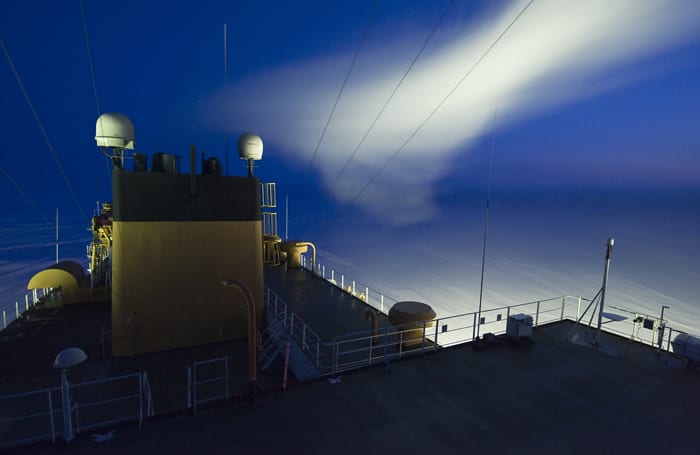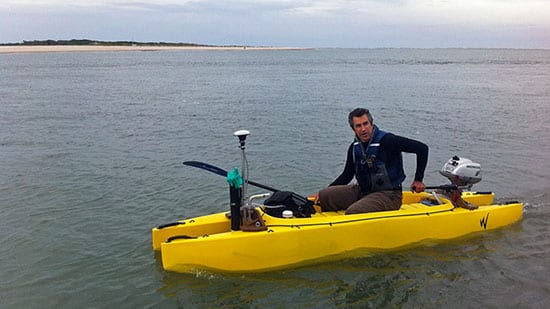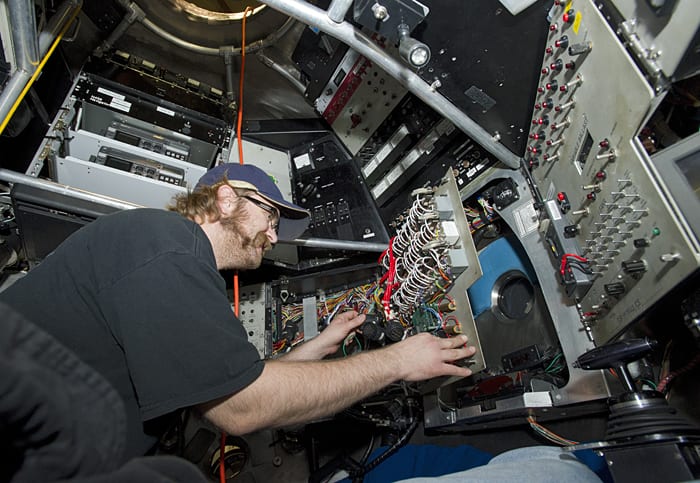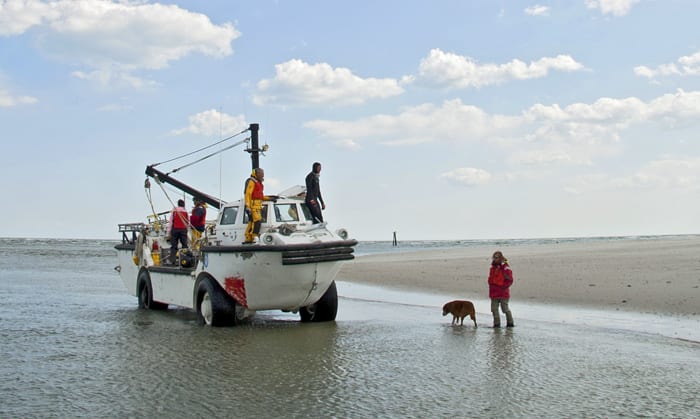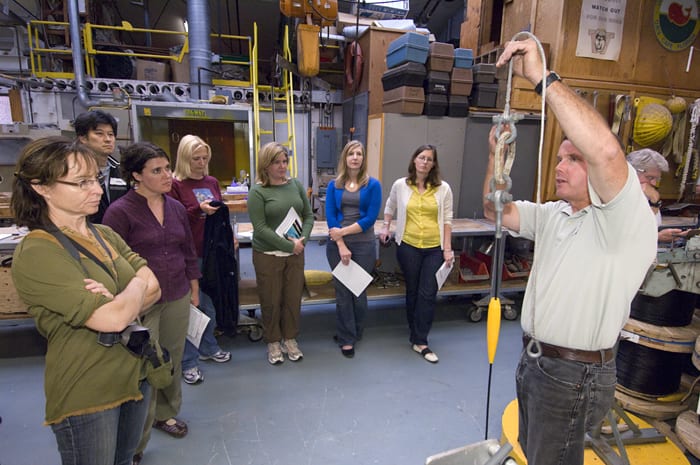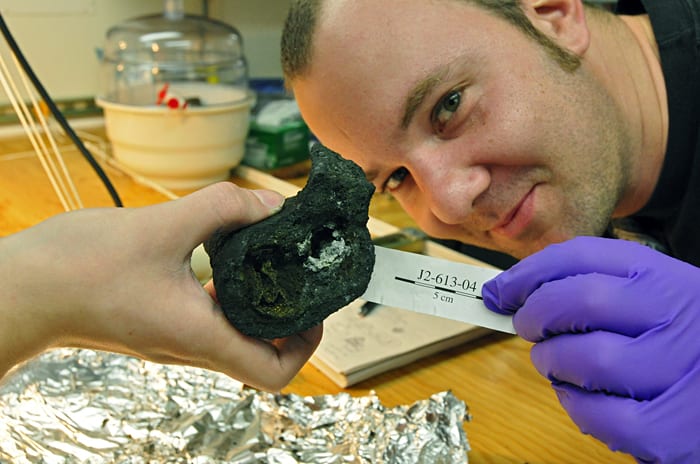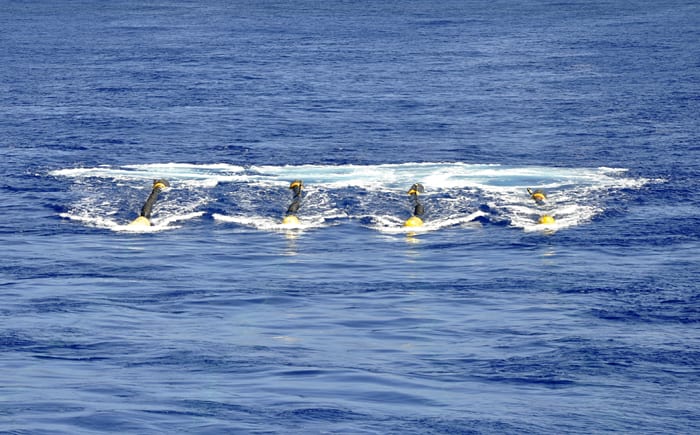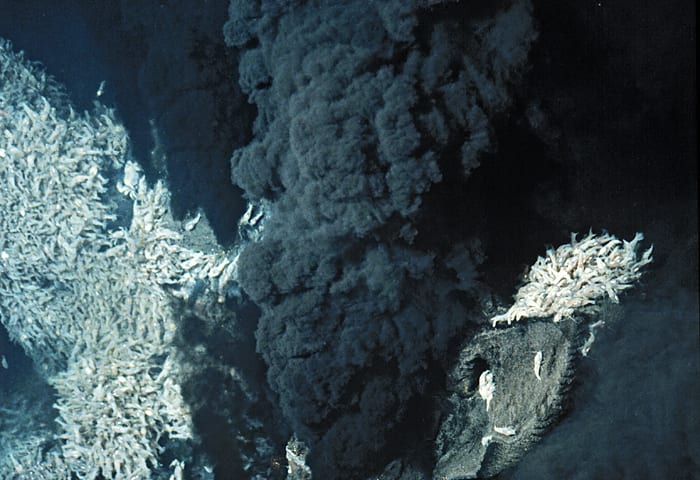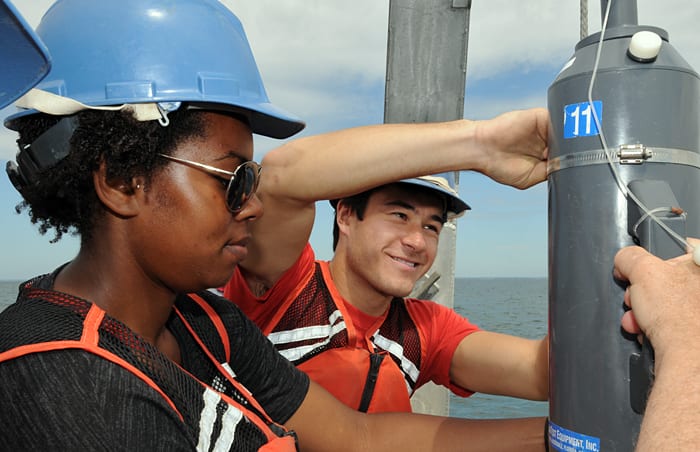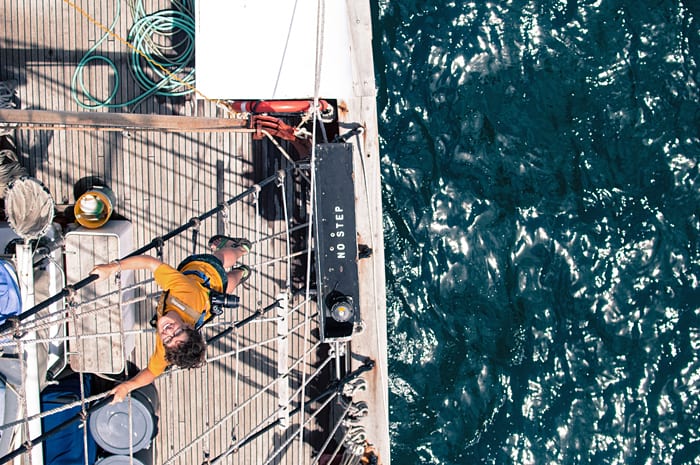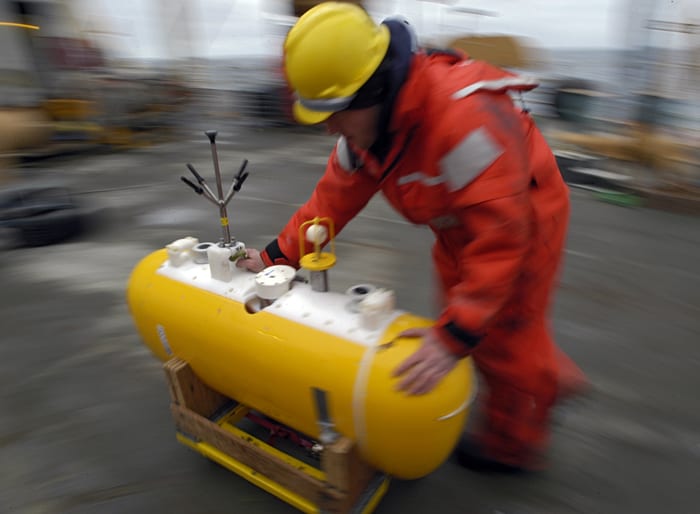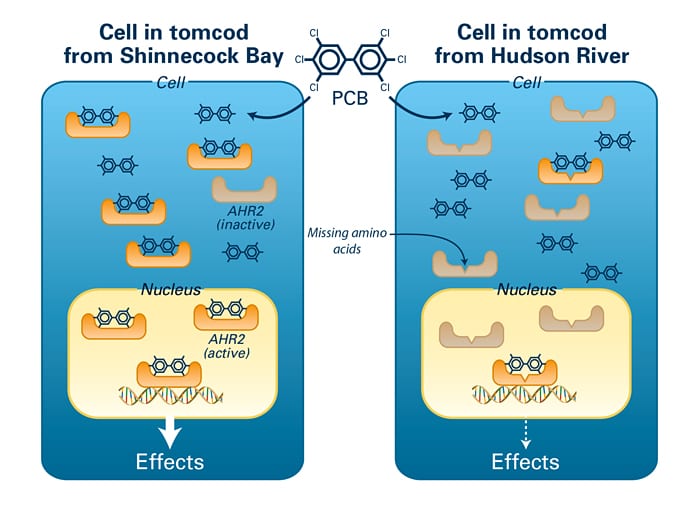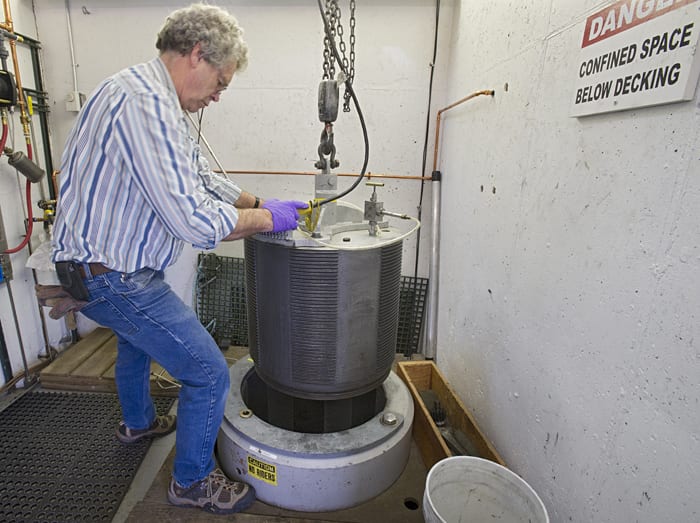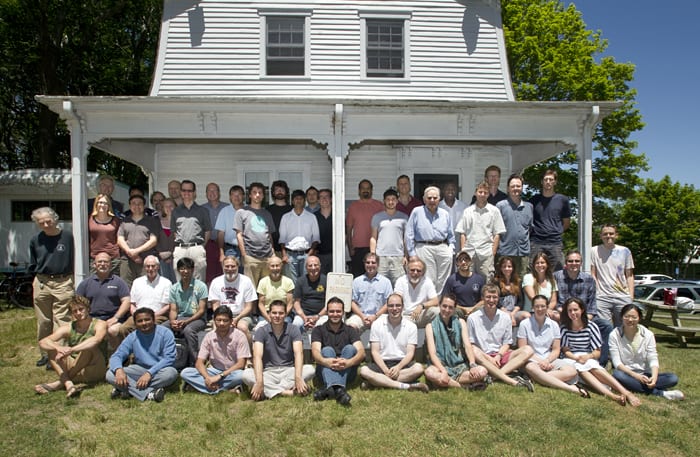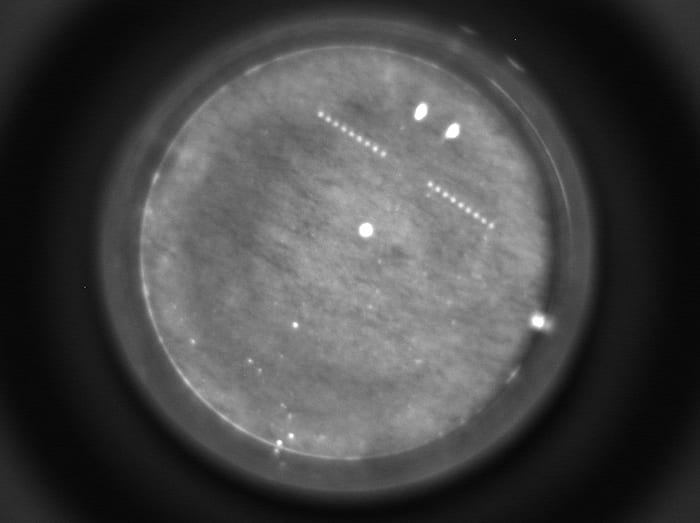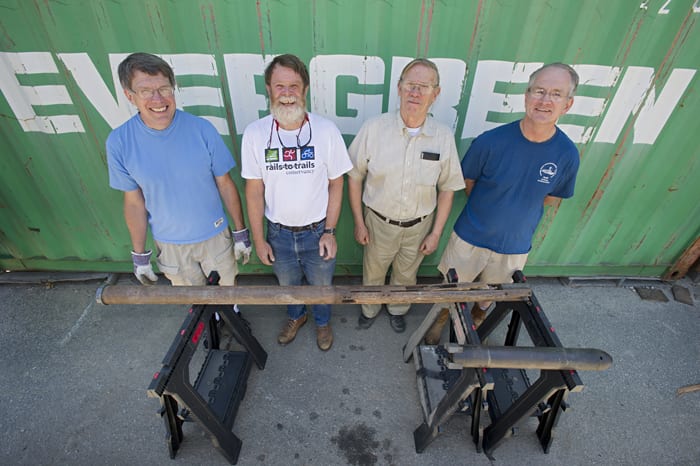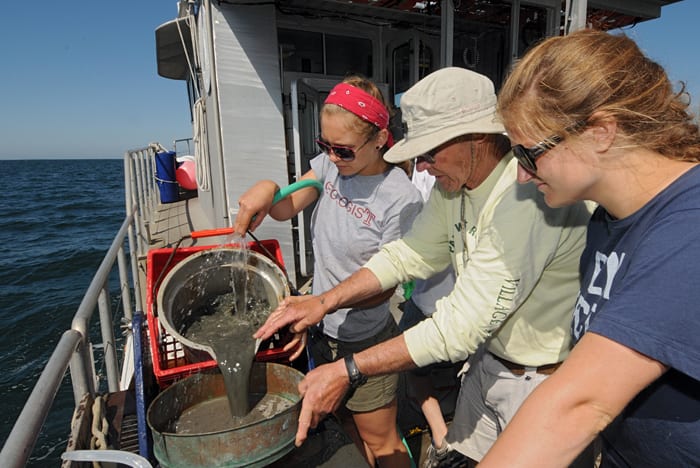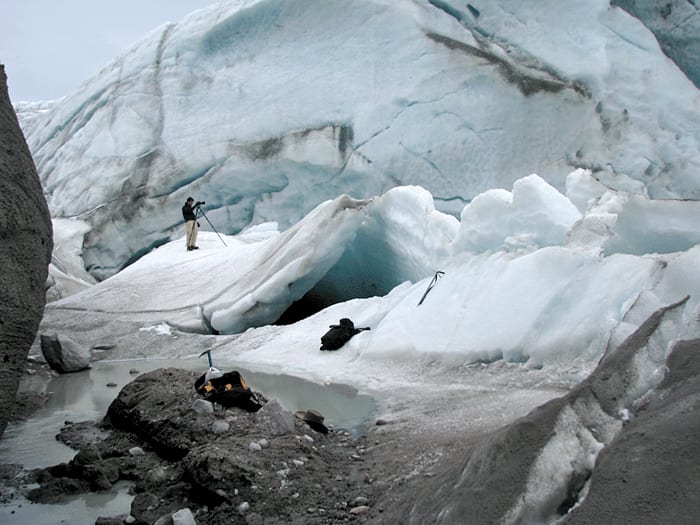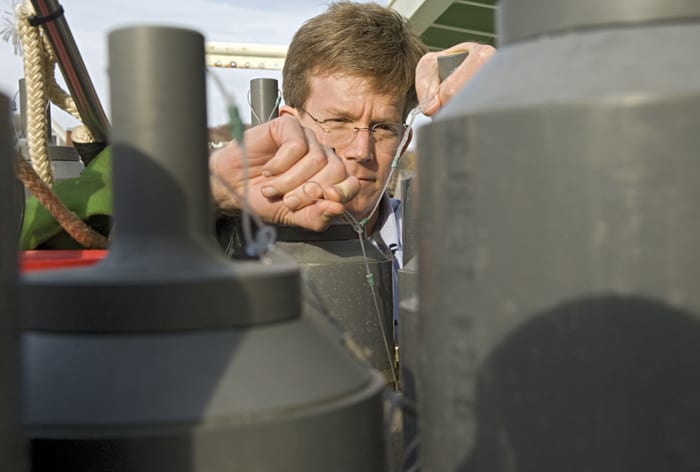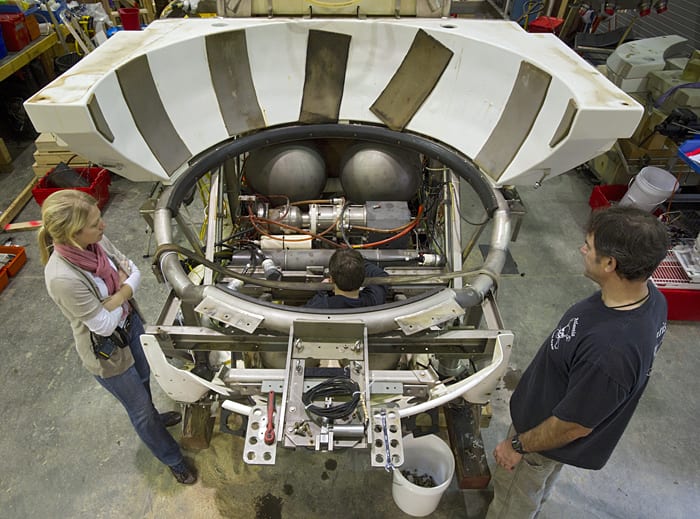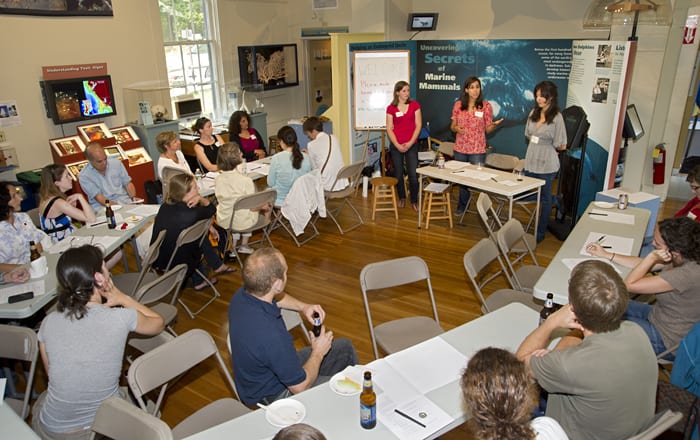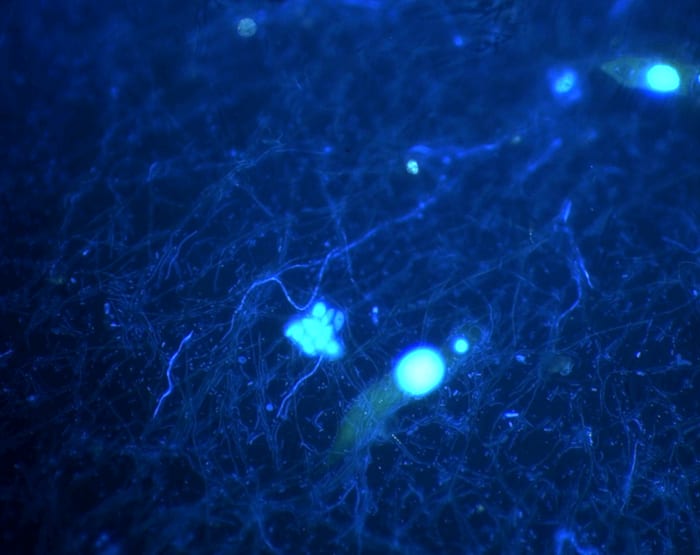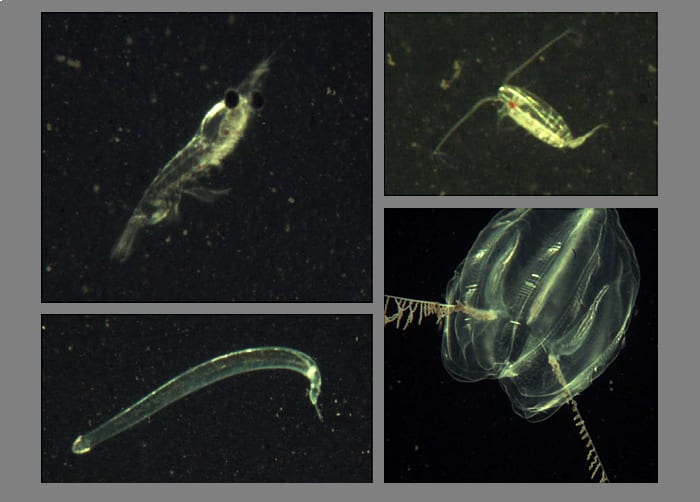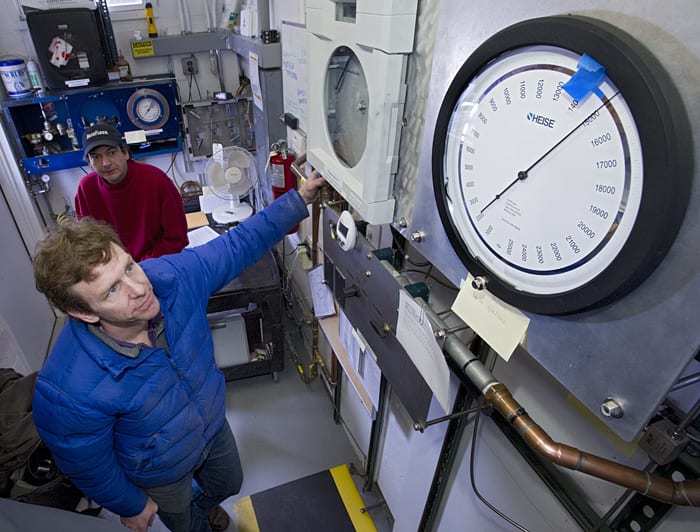Multimedia Items
Hello?
Even in the far north, scientists on research vessels maintain some, limited contact with home via email. This view from the bridge of the U.S. Coast Guard Cutter Healy shows…
Read MoreThe Roiling New River Inlet
Out With the Old
In 2011, WHOI engineering assistant Korey Verhein was part of a team that removed the electronics from Alvin‘s personnel sphere. This summer, engineers are installing a new, $15 million sphere that…
Read MoreWhich Way to the Beach?
A 1950s-era amphibious vehicle helped make a challenging day at the beach easier for WHOI scientists Steve Elgar (in yellow) and Britt Raubenheimer (on shore with her guide dog Whit).…
Read MoreMeet the Mooring Experts
WHOI research specialist Rick Trask tackles difficult challenges, like how to make measurements of a single spot in the ocean for long periods of time. He and his colleagues do it using…
Read MorePiece of the Deep
WHOI marine chemist Frieder Klein identifies a piece of a hydrothermal vent chimney collected from the Piccard vent field on the Mid-Cayman Rise by the remotely operated vehicle Jason during…
Read MoreDon’t Look Behind You
Water is vital to all known forms of life on Earth, but it also plays a fundamental role in processes deep beneath the seafloor. Water in Earth’s mantle enables tectonic…
Read MoreDeep-Sea Traffic Jam
Thousands of shrimp (Rimicaris exoculata) crowd around a black smoker at the Snake Pit hydrothermal vent field on the Mid-Atlantic Ridge. The dark material gushing out of the chimney is…
Read MoreSummer Sampling
Arielle Gomes-Williams from Smith College and Matt Takata from Northwestern College prepare a Niskin bottle, a common method for collecting water samples at various depths. They are among 32 undergraduate…
Read MoreNowhere to Go but Up
Earlier this month, MIT/WHOI Joint Program student Laura Stevens learned how to safely navigate ship rigging during the 10-day Jake Peirson Summer Cruise off Cape Cod. She joined fellow first-year…
Read MoreReady for Download
In 2003, scientists traveled to the Beaufort Sea to collect instruments, called moored profilers, that had spent the previous year at least a mile under Arctic ice gathering data about…
Read MoreTools of Survival
Water pollution often devestates marine life, but can occasionally make some fish tougher. WHOI researchers recentlycompared the way tomcod in Shinnecock Bay and the Hudson River have evolved in response…
Read MoreHolding Up Under Pressure
In addition to its need to submerge, the submersible Alvin also needs to float. For this, engineers rely on syntactic foam, which iscomposed of microscopic glass spheres embedded in an…
Read MoreA Fluid Problem
Every summer since 1959, graduate students interested in physical and mathematical sciences have gathered at WHOI to study geophysical fluid dynamics. This field focuses on the physics and motions of fluids,…
Read MoreConnecting the Dots
Each summer, large numbers of dormantcysts of the harmful algal species Alexandrium fundyense hatch from the seafloor off the Northeast Coast of the U.S. and cause shellfish grounds in New…
Read MoreEars in the Deep
A recent, routine audit provided an opportunity for WHOI scientists to dig out some old equipment and reminisce about former successes. Here, Steve Swift, Tom Bolmer, Hartley Hoskins, and Ralph…
Read MoreGift from the Sea
In June, retired WHOI biologist George Hampson (center) joined a group of WHOI Summer Student Fellows on board the research vessel Tioga to teach them basic oceanographic data- and sample-collection…
Read MoreArctic Outlet
Photographer Chris Linder explores an outlet portal from the base of Greenland’s Leverette Glacier. The water flowing in the stream comes from melting on and in the glacier, which drains…
Read MoreForecasting Biology
WHOI senior scientist Dennis McGillicuddy prepares a CTD (conductivity, temperature, depth) rosette as part of a 2008 cruise to study conditions leading to periodic blooms of harmful algae in New…
Read MoreSurrounded by Work
It’s been 18 months since engineers took Alvin apart, a major undertaking involving submersible pilots Dave Walter (center) and Bruce Strickrott (right) as well as a host of WHOI engineers and…
Read MoreMaking an Impact
The MIT-WHOI Broader Impacts Group (BIG) hosted it’s inaugural event on June 19th at the WHOI Ocean Science Exhibit Center. Invited guests included individuals from WHOI and other Woods Hole…
Read MoreDenizens of the Deep
WHOI microbial ecologist Virginia Edgcomb collected the organisms shown here in 2009 from the top of a deep, hypersaline, anoxic lake on the Mediterranean seafloor. The bright blue color comes…
Read MoreIn Their Own World
During an early-winter expedition to the Arctic led by Woods Hole Oceanographic Institution biologist Carin Ashjian, investigators used a video plankton recorder (VPR) to study tiny animal plankton in the…
Read MoreUnder Pressure
WHOI engineers Griff Outlaw (front) and Brian Durante monitor a gauge while pressure testing syntactic foam to be used in the improved research submersible Alvin. The foam, which will provide buoyancy for…
Read More
